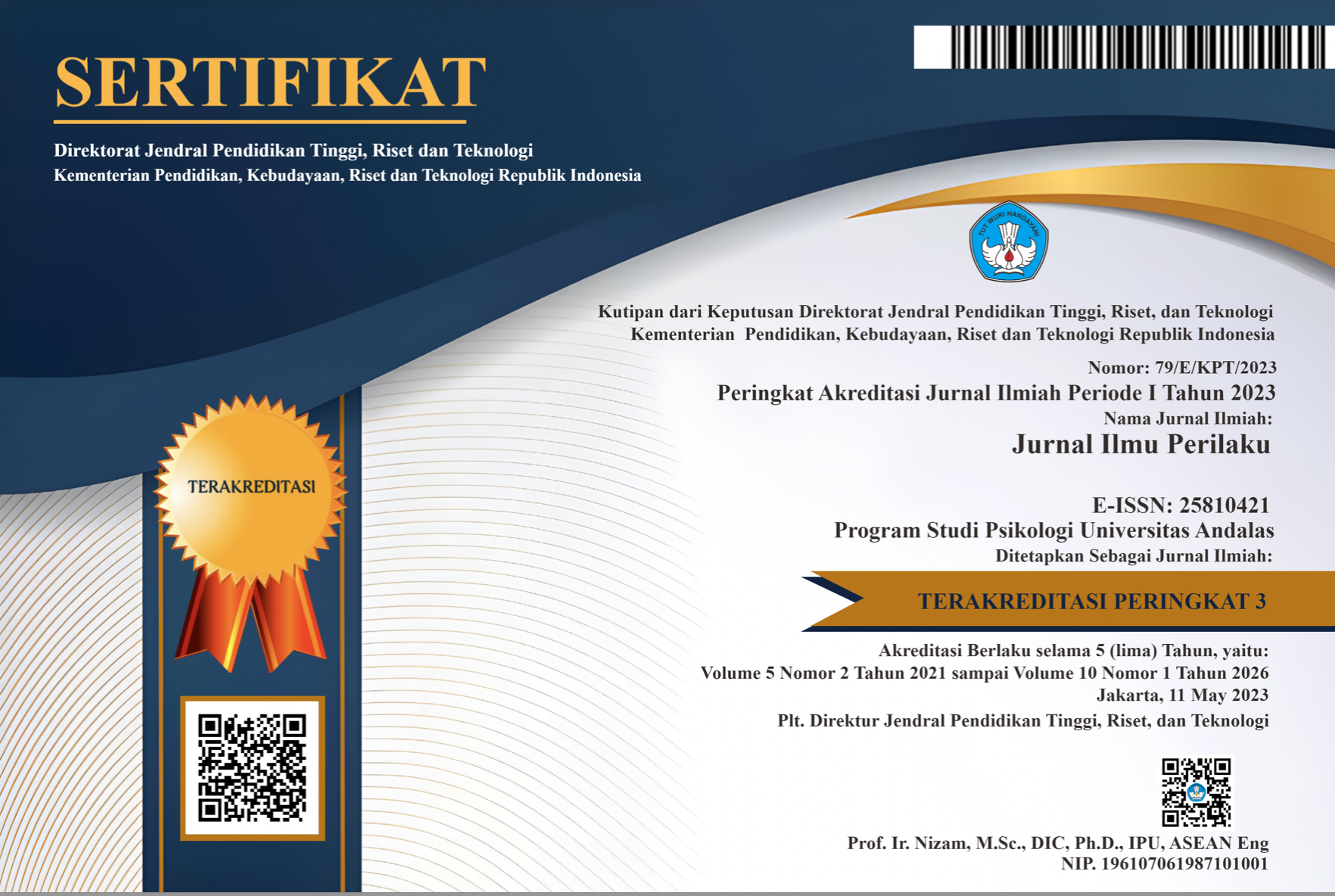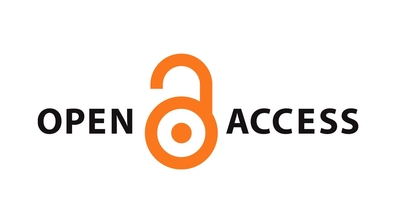Pengujian Level Kreativitas Pada Siswa Berdasarkan Skala Kekuatan dan Kebajikan Karakter dan Tes Kreativitas Verbal
Abstract
Creativity is an important aspect in building a good culture of education. Good creativity is shown by the learning outcomes that not only focus on improving cognitive abilities but also on the process of solving a problem either by using divergent or convergent thinking skills. This study was carried out with descriptive quantitative. The study was conducted using two instruments, namely the creativity character scale consisting of 10 items and a set of Verbal Creativity Tests (TKV) consisting of six subtests. The total subjects involved in this study were 470 students who were divided into groups that got the character scale of creativity with the group given the verbal ability test. The results of the study, either through the creativity character scale or verbal creativity tests, show the acquisition of creativity scores which describes that there are still many individuals who have not been optimized in terms of creativity. This becomes a serious concern that can be anticipated by providing information about the importance of creativity. It is also built by creating an instrument that is more effective directly capturing the condition of one's creativity as a whole.
Downloads
References
An, D., Song, Y., & Carr, M. (2016). A comparison of two models of creativity: Divergent thinking and creative expert performance. Personality and Individual Differences, 90, 78–84. https://doi.org/10.1016/j.paid.2015.10.040
Boysen, M. S. W. (2017). Embracing the network: A study of distributed creativity in a school setting. Thinking Skills and Creativity, 26, 102–112. https://doi.org/10.1016/j.tsc.2017.10.002
Burns, B. D., Zhang, Y., Wieth, M., & Touyz, S. (2017). An exploratory study of creativity and eating disorders. Journal of Eating Disorders, 5(1), 536–556. https://doi.org/10.1186/s40337-017-0176-9
Cecil, R., & Ph, D. (1981). Test Bias : in God We Trust ; The Journal of Special Education, 17(3).
Chang, S. H., Wang, C. L., & Lee, J. C. (2016). Do award-winning experiences benefit students’ creative self-efficacy and creativity? The moderated mediation effects of perceived school support for creativity. Learning and Individual Differences, 51, 291–298. https://doi.org/10.1016/j.lindif.2016.09.011
Chang, Y. S., Lin, H. C., Chien, Y. H., & Yen, W. H. (2018). Effects of creative components and creative behavior on design creativity. Thinking Skills and Creativity, 29, 23–31. https://doi.org/10.1016/j.tsc.2018.05.007
De Manzano, Ö., & Ullén, F. (2018). Genetic and environmental influences on the phenotypic associations between intelligence, personality, and creative achievement in the arts and sciences. Intelligence, 69(February), 123–133. https://doi.org/10.1016/j.intell.2018.05.004
Delis, D. C., Lansing, A., Houston, W. S., Wetter, S., Han, S. D., Jacobson, M., … Kramer, J. (2007). Creativity lost: The importance of testing higher-level executive functions in school-age children and adolescents. Journal of Psychoeducational Assessment, 25(1), 29–40. https://doi.org/10.1177/0734282906292403
Fink, A., Koschutnig, K., Hutterer, L., Steiner, E., Benedek, M., Weber, B., … Weiss, E. M. (2014). Gray matter density in relation to different facets of verbal creativity. Brain Structure and Function, 219(4), 1263–1269. https://doi.org/10.1007/s00429-013-0564-0
Fink, A., & Neubauer, A. C. (2006). EEG alpha oscillations during the performance of verbal creativity tasks: Differential effects of sex and verbal intelligence. International Journal of Psychophysiology, 62(1), 46–53. https://doi.org/10.1016/j.ijpsycho.2006.01.001
Gajda, A. (2016). The relationship and moderators of school achievement and creativity at different educational stages. Thinking Skills and Creativity, 19, 246–259. https://doi.org/10.1016/j.tsc.2015.12.004
Georgiev, G. V., & Georgiev, D. D. (2018). Enhancing user creativity: Semantic measures for idea generation. Knowledge-Based Systems, 151, 1–15. https://doi.org/10.1016/j.knosys.2018.03.016
Glăveanu, V. P. (2018). Educating which creativity? Thinking Skills and Creativity, 27, 25–32. https://doi.org/10.1016/j.tsc.2017.11.006
Heng, Y. T., Wagner, D. T., Barnes, C. M., & Guarana, C. L. (2018). Archival research: Expanding the methodological toolkit in social psychology. Journal of Experimental Social Psychology, 78(August 2017), 14–22. https://doi.org/10.1016/j.jesp.2018.04.012
Hromcová, J., & Agnese, P. (2018). Globalization, welfare, and the attitudes toward higher education. Economic Modelling, (November 2017), 1–15. https://doi.org/10.1016/j.econmod.2018.05.013
Hur, Y. M., Jeong, H. U., & Piffer, D. (2014). Shared genetic and environmental influences on self-reported creative achievement in art and science. Personality and Individual Differences, 68, 18–22. https://doi.org/10.1016/j.paid.2014.03.041
Japardi, K., Bookheimer, S., Knudsen, K., Ghahremani, D. G., & Bilder, R. M. (2018). Functional magnetic resonance imaging of divergent and convergent thinking in Big-C creativity. Neuropsychologia. https://doi.org/10.1016/j.neuropsychologia.2018.02.017
Kenett, Y. N. (2019). What can quantitative measures of semantic distance tell us about creativity? Current Opinion in Behavioral Sciences, 27, 11–16. https://doi.org/10.1016/j.cobeha.2018.08.010
Konstantinidou, E., Zisi, V., Katsarou, D., & Michalopoulou, M. (2015). Barriers and inhibitors of creativity in physical education. European Psychomotricity Journal, 7, 17–31. Retrieved from http://search.ebscohost.com/login.aspx?direct=true&db=a9h&AN=119793540&site=ehost-live&scope=site
LPSP3 UI. (2011). Buku petunjuk penggunaan tes kreativitas verbal. Depok: Fakultas Psikologi Universitas Indonesia.
Lucas, B. (2016). A five-dimensional model of creativity and its assessment in schools. Applied Measurement in Education, 29(4), 278–290. https://doi.org/10.1080/08957347.2016.1209206
Ma, X., Yang, Y., Wang, X., & Zang, Y. (2018). An integrative review: Developing and measuring creativity in nursing. Nurse Education Today (Vol. 62). Elsevier Ltd. https://doi.org/10.1016/j.nedt.2017.12.011
Marques-Costa, C., Almiro, P. A., & Simões, M. R. (2018). Computerized cognitive tests (CCT) in elderly: A psychometric review. Revue Europeenne de Psychologie Appliquee, 68(2), 61–68. https://doi.org/10.1016/j.erap.2018.04.002
Munandar, S., Achir, Y., Winata, S., Suharso, P., Salim, R., Rifameutia, T., & Brahma, G. (1985). Laporan penelitian standarisasi tes kreativitas verbal. Jakarta.
Murphy, K. R., & Davidshofer, C. O. (1997). Psychological Testing: Principles and Applications. Statistics.
Ramdani, Z. (2018a). Construction of academic integrity scale. International Journal of Research Studies in Psychology, 7(1), 87–97. https://doi.org/10.5861/ijrsp.2018.3003
Ramdani, Z. (2018b). Kolaborasi antara kepala sekolah, guru dan siswa dalam menciptakan sistem pendidikan yang berkualitas. In National Conference on Educational Assessment and Plolicy. Jakarta: Balai Pusat Penelitian (Balitbang) Kementrian Pendidikan dan Kebudayaan Republik Indonesia.
Ramdani, Z., & Fahmi, I. (2014). Profil kekuatan karakter dan kebajikan pada mahasiswa berprestasi. Psympathic, 1, 98–108. https://doi.org/https://doi.org/10.15575/psy.v1i1.471
Revilla, E., & Rodríguez-Prado, B. (2018). Bulding ambidexterity through creativity mechanisms: Contextual drivers of innovation success. Research Policy, (January 2017), 0–1. https://doi.org/10.1016/j.respol.2018.05.009
Runco, M. A. (2018). Creativity. Change: The Magazine of Higher Learning, 39(4), 55–60. https://doi.org/10.3200/CHNG.39.4.55-C4
Spies, R., & Plake, B. (2005). The sixteenth mental measurement yearbook. Nebraska: The University of Nebraska Press.
Tarnoto, N., & Purnamasari, A. (2009). Perbedaan kreativitas siswa SMPN 2 Moyudan ditinjau dari tingkat pendidikan ibu. Humanitas.
Tian, F., Chen, Q., Zhu, W., Wang, Y., Yang, W., Zhu, X., … Qiu, J. (2018). The association between visual creativity and cortical thickness in healthy adults. Neuroscience Letters, 683, 104–110. https://doi.org/10.1016/j.neulet.2018.06.036
Zabelina, D. L., & Ganis, G. (2018). Creativity and cognitive control: Behavioral and ERP evidence that divergent thinking, but not real-life creative achievement, relates to better cognitive control. Neuropsychologia. https://doi.org/10.1016/j.neuropsychologia.2018.02.014
Zhou, J., Shen, J., Wang, X., Neber, H., & Johji, I. (2013). A cross-cultural comparison: Teachers’ conceptualizations of creativity. Creativity Research Journal, 25(3), 239–247. https://doi.org/10.1080/10400419.2012.730006

This work is licensed under a Creative Commons Attribution-NonCommercial-ShareAlike 4.0 International License.
The non-commercial use of the article is governed by the Creative Commons Attribution license as currently displayed on Creative Commons Attribution-NonCommercial-ShareAlike 4.0 International License.
JIP's spirit is to disseminate articles published are as free as possible. Under the Creative Commons license, JIP permits users to copy, distribute, display, and perform the work for non-commercial purposes only. Users will also need to attribute authors and JIP on distributing works in the journal.
Please find the rights and licenses in Jurnal Ilmu Perilaku (JIP).
- License
The non-commercial use of the article will be governed by the Creative Commons Attribution license as currently displayed on Creative Commons Attribution-NonCommercial-ShareAlike 4.0 International License.
- Author’s Warranties
The author warrants that the article is original, written by stated author(s), has not been published before, contains no unlawful statements, does not infringe the rights of others, is subject to copyright that is vested exclusively in the author and free of any third party rights, and that any necessary written permissions to quote from other sources have been obtained by the author(s).
- User Rights
JIP's spirit is to disseminate articles published are as free as possible. Under the Creative Commons license, JIP permits users to copy, distribute, display, and perform the work for non-commercial purposes only. Users will also need to attribute authors and JIP on distributing works in the journal.
- Rights of Authors
Authors retain the following rights:
- Copyright, and other proprietary rights relating to the article, such as patent rights,
- The right to use the substance of the article in future own works, including lectures and books,
- The right to reproduce the article for own purposes, provided the copies are not offered for sale,
- The right to self-archive the article.
- Co-Authorship
If the article was jointly prepared by other authors, the signatory of this form warrants that he/she has been authorized by all co-authors to sign this agreement on their behalf, and agrees to inform his/her co-authors of the terms of this agreement.
- Termination
This agreement can be terminated by the author or JIP upon two months’ notice where the other party has materially breached this agreement and failed to remedy such breach within a month of being given the terminating party’s notice requesting such breach to be remedied. No breach or violation of this agreement will cause this agreement or any license granted in it to terminate automatically or affect the definition of JIP.
- Royalties
This agreement entitles the author to no royalties or other fees. To such extent as legally permissible, the author waives his or her right to collect royalties relative to the article in respect of any use of the article by JIP or its sublicensee.
- Miscellaneous
JIP will publish the article (or have it published) in the journal if the article’s editorial process is successfully completed and JIP or its sublicensee has become obligated to have the article published. JIP may conform the article to a style of punctuation, spelling, capitalization, referencing and usage that it deems appropriate. The author acknowledges that the article may be published so that it will be publicly accessible and such access will be free of charge for the readers.










